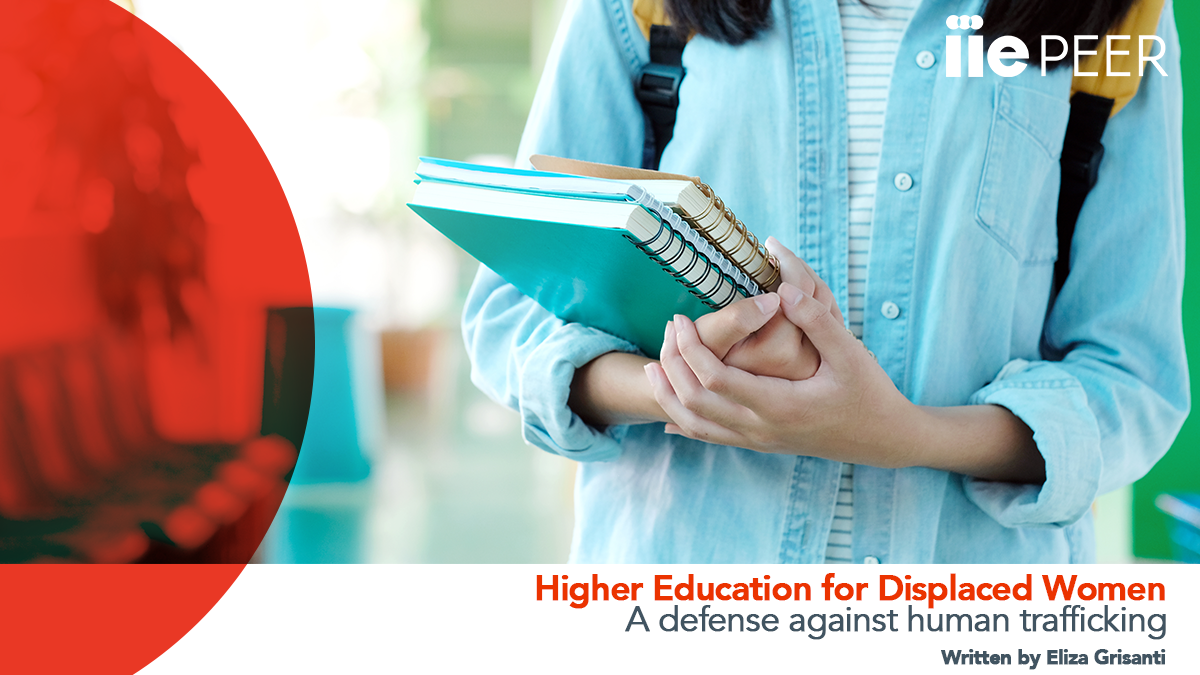
“Their time is up.”
Thus spoke Oprah Winfrey at the 2018 Golden Globe Awards, of women who do not dare speak up against powerful, dangerous men (“Read Oprah,” 2018). In the United States and elsewhere we are reckoning with the systemic disregarding of women, with a flood of #MeToo declarations and reports of serial sexual harassment. Even among the most privileged and powerful people in the world, among the wealthiest and most famous, women are subjected to the force of domineering men. Globally, it is the most disadvantaged women who feel the gender/power differential the most: the abuse inversely grows as women’s power lessens. And though the most vulnerable populations around the world include both men and women, women’s diminished status compounds any negative effects of poverty and situations of emergency. Displaced women are some of the women most disadvantaged: forgotten or attacked by their state, expected to care for children and family, physically vulnerable in transit, unable to access education, and at-risk of being trafficked.
There are currently 68.5 million displaced people, roughly half of whom are women and girls (UNHCR, 2018b; Medecins Sans Frontieres, 2018). The focus of this paper is the role higher education can play in protecting this population from gender-based violence and human trafficking. But before discussing how education can be a solution, we must understand the human trafficking problem, the current state of education for displaced women, and the ways in which displaced women are at risk of violence. The paper will work through each of these sections before arriving at the remedies higher education proposes and will end with successful programs and potential next steps.
One natural question is why this paper examines higher education and not education generally. Lower levels of education are incredibly important: they instill fundamental knowledge and facilitate cognitive development (Shafiq, 2013, p. 1). And it would be impossible to reach higher education without the foundation lower levels of education provide. However, higher education possesses benefits primary and secondary education do not. In regard to the hopes held for displaced people in the future, higher education is a necessary ingredient. For example, if we want to move toward a world where NGOs employ people directly connected the work they are doing, we need to bring those future collaborators to the table. This kind of connection is not forged through primary or secondary school but through higher education.
The danger of writing this paper specifically about displaced women is that it may allow for other papers, ones that supposedly discuss displaced people as a whole, to exclude women entirely. Doreen Indra (2008) in Not a “Room of One’s Own,” Engendering Forced Migration Knowledge and Practice writes, “To permute Virginia Woolf’s phrase, forced migration discourse may now increasingly allocate a ‘room of their own’ to women and men wanting to discuss women’s issues, but most of the rest of the house remains genderless space” (p. 5). This paper is meant to bridge the gap between the room of women’s own and the rest of the house by writing over the “genderless” discussion of displacement with one that focuses on women. We must both dedicate research and discussion to female-specific topics and actively include women in the “genderless” conversations, ensuring that conversations not primarily focused on women still include them.

